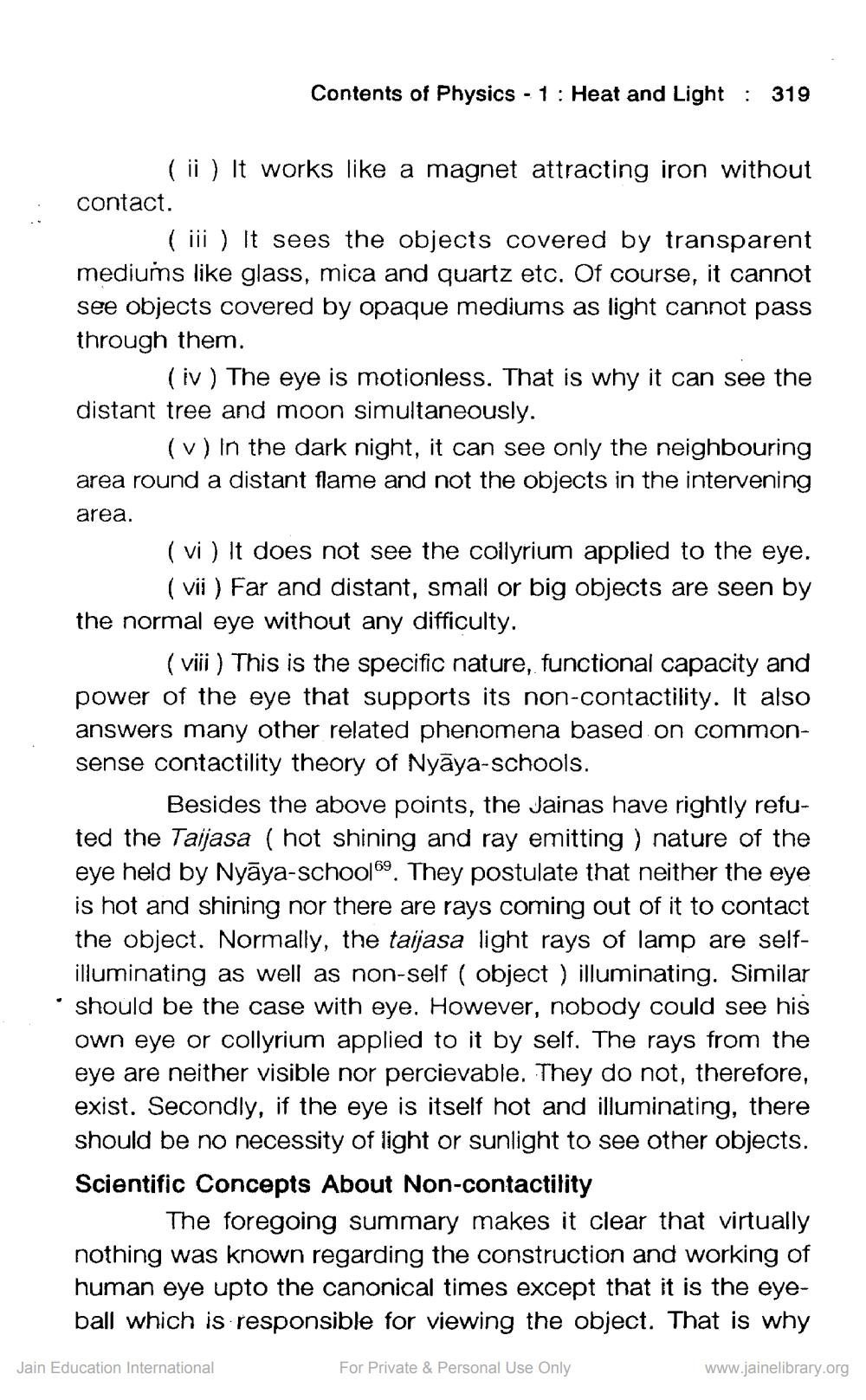________________
Contents of Physics - 1 : Heat and Light : 319
(ii) It works like a magnet attracting iron without contact.
(iii) It sees the objects covered by transparent mediums like glass, mica and quartz etc. Of course, it cannot see objects covered by opaque mediums as light cannot pass through them.
(iv) The eye is motionless. That is why it can see the distant tree and moon simultaneously.
(v) In the dark night, it can see only the neighbouring area round a distant flame and not the objects in the intervening area.
(vi) It does not see the collyrium applied to the eye.
(vii) Far and distant, small or big objects are seen by the normal eye without any difficulty.
(viii) This is the specific nature, functional capacity and power of the eye that supports its non-contactility. It also answers many other related phenomena based on commonsense contactility theory of Nyāya-schools.
Besides the above points, the Jainas have rightly refuted the Taijasa ( hot shining and ray emitting ) nature of the eye held by Nyāya-school69. They postulate that neither the eye is hot and shining nor there are rays coming out of it to contact the object. Normally, the taijasa light rays of lamp are selfilluminating as well as non-self ( object ) illuminating. Similar · should be the case with eye. However, nobody could see his
own eye or collyrium applied to it by self. The rays from the eye are neither visible nor percievable. They do not, therefore, exist. Secondly, if the eye is itself hot and illuminating, there should be no necessity of light or sunlight to see other objects. Scientific Concepts About Non-contactility
The foregoing summary makes it clear that virtually nothing was known regarding the construction and working of human eye upto the canonical times except that it is the eyeball which is responsible for viewing the object. That is why
Jain Education International
For Private & Personal Use Only
www.jainelibrary.org




